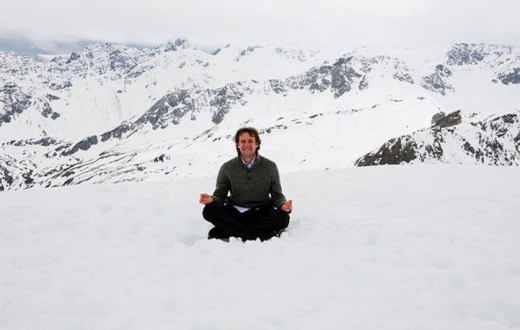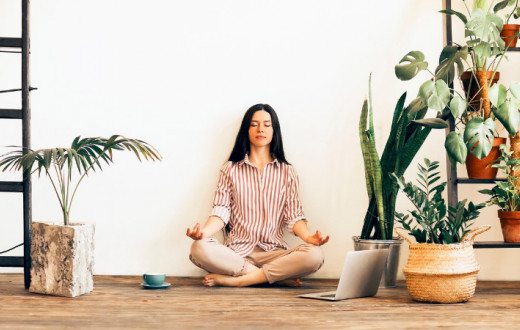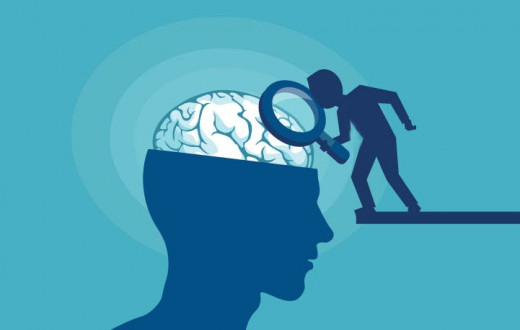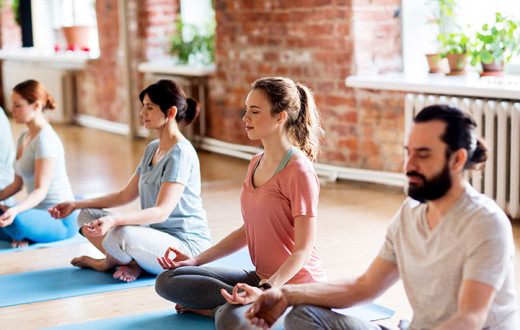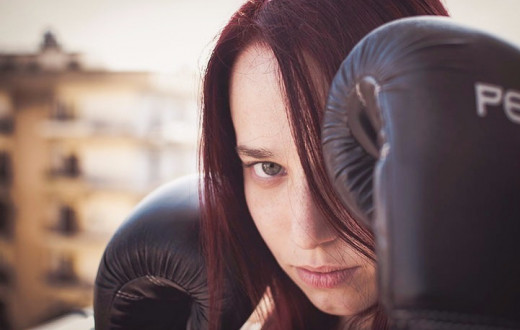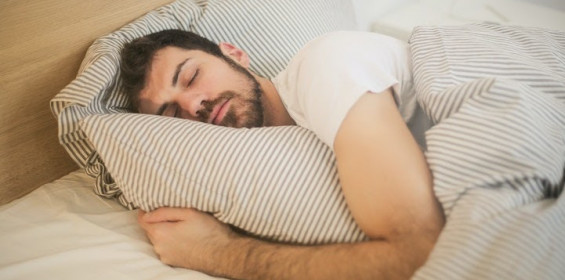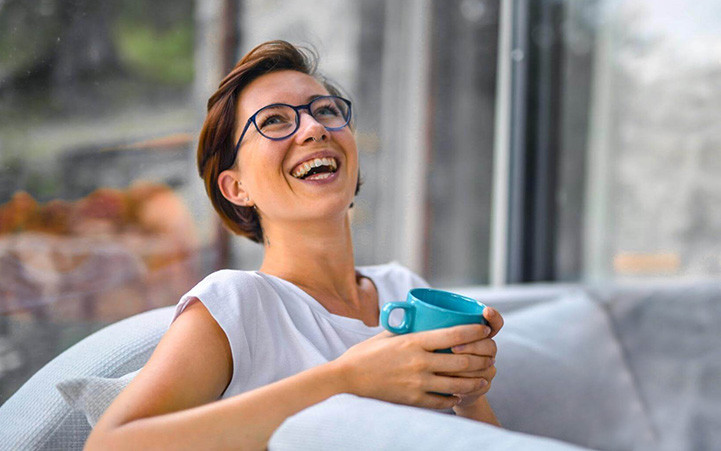
When I was growing up, I witnessed a close friend having a panic attack. It looked terrible, but I never really understood the havoc that anxiety can wreak on a person’s life until it happened to me.
About ten years ago, I visited another friend in a far away city who was down on his luck. I ended up staying in an unfamiliar and unsafe place, and an unfortunate event led me to feel some anxiety. At first I wasn't too worried about it. I mean, everyone feels anxious sometimes right?
But then the anxiety began to snowball. I started feeling sick to my stomach and nauseous. I couldn't eat. I couldn't sleep. My heart was beating like thunder. And I Just. Couldn’t. Calm. Down.
I tried all the little tricks that normally help calm anxiety, like taking a hot bath and listening to music, but nothing helped (this was before I learned about breathwork and meditation).
Then the sense of impending doom kicked in. I felt like things were never going to be alright again. Never. I was losing control. And fast.
I was about to call 911, when just in the nick of time, a close friend called and talked me down. I'm lucky they called when they did.
That was the day I realized how debilitating anxiety can be. It can absolutely take over and shut a person down.
If you suffer from chronic stress or anxiety disorders, or if you have a family member who does, the burden can sometimes feel overwhelming.
But read on to learn more about what you can do to put anxiety in its place, and take control of your life back.
What are anxiety disorders?
We all have anxious thoughts here and there. But what exactly is an anxiety disorder?
Someone may be suffering from an anxiety disorder when worry, anxiety, and/or fear become frequent, intense, excessive, and persistent, and interfere with daily activities.
Anxiety disorders often involve episodes of sudden and intense anxiety or fear that peak within minutes or hours, and can turn into terror.
What are the symptoms of anxiety disorders?
The physical symptoms of these common mental health conditions are no fun at all. They may begin during childhood or the teenage years and persist into adulthood.
Symptoms can include:
Feeling tense, restless, shaky, or nervous
A sense of impending danger or doom
Elevated heart rate
Heart palpitations
Hyperventilation
Difficult thinking about anything other than fear/worry
Gastrointestinal problems such as indigestion or diarrhea
Nausea
Insomnia
Excessive sweating or trembling
Different types of anxiety disorders
There are many different kinds of anxiety disorders, but most fall under the umbrella of the following five:
Generalized anxiety disorder (GAD)
According to the Anxiety and Depression Association of America, generalized anxiety disorder affects 6.8 million adults in the US every year, and women are twice as likely to be affected.
GAD is characterized by persistent excessive worry about any number of different things including money, health, family, work, and almost anything else you can think of.
This all-too-common disorder can generally be diagnosed when a person has trouble controlling their worries on more days than not for six months, and exhibits at least three symptoms.
Obsessive compulsive disorder (OCD)
This disorder is characterized by unwanted thoughts (obsessions) that recur and/or repetitive behaviors (compulsions). Some examples of compulsions include repeated hand washing, counting, or cleaning.
These behaviors are performed in hope of preventing obsessive thoughts from coming, or making them go away. These compulsions offer only temporary relief to those who suffer from OCD, and not performing them generally increases anxious thoughts.
Panic disorder
This disorder is characterized by sudden and repeated episodes of intense fear. These episodes (panic attacks) bring some pretty alarming physical symptoms that may include heart palpitations, chest pain, shortness of breath, hyperventilation, dizziness, and nausea.
A panic attack may leave the sufferer feeling like they are having a heart attack or that they are going to die.
Post traumatic stress disorder (PTSD)
This disorder is characterized by intense physical or emotional reactions triggered by the memory of past trauma, often including physical harm, or the threat of physical harm.
Some events that may result in PTSD include violent assaults, natural disasters, auto accidents, sexual assaults, and military combat.
Social phobia or social anxiety disorder
This disorder is characterized by excessive self-consciousness in everyday social situations which leads to extreme anxiety. A single type of social situation may lead to social phobia, like fear of eating in front of others, but in its most extreme form, sufferers experience symptoms whenever they are around other people.
How an anxiety disorder affects your health
Long term exposure to anxiety is not good for your mental health or your physical health.
Some of the health problems that anxiety can cause are :
Elevated blood pressure
Muscle tension
Headaches
Heart palpitations
Chest pain
Gastrointestinal issues
Decreased immune function
Weight gain
The jury is in. If you want to be healthy and happy you have to reduce stress and anxiety in your life. But how?
Read on for six simple tips to alleviate stress and anxiety, and get back to living the good life.
How to reduce anxiety symptoms
The good news is there are several habits you can incorporate into your daily life to manage anxiety and reduce stress hormones in your system.
Here are six simple ones to get you started:
Get physical
Incorporating yoga and other types of physical exercise into your daily routine is a great way to reduce anxiety. Studies consistently show that exercise helps alleviate the symptoms of anxiety disorders and other mental health conditions like depression.
Reduce your caffeine intake
I know. Coffee tastes really good, but hear me out. Anxiety issues can lead to difficulty sleeping, and when you're tired from lack of sleep you may be more inclined to over-caffeinate to get through the day. But caffeine worsens many symptoms of anxiety. Try cutting down on caffeine, and see the difference it can make.
Spend some time outside
Spending as little as ten minutes in a natural setting such as a park or a forest can offer tremendous benefits to your mental health, including reducing perceived stress levels and increasing feelings of well-being. So get outside, get some fresh air, and don’t forget to stop and smell the roses!
Take a break from screen-time
Let's be honest. We love our gadgets. Our phones, computers, and tablets provide us with hours... upon hours... upon hours of stimulation. But all that stimulation can leave us feeling anxious and wired, and after too much screen-time it can be difficult to wind down. So detach from your screen for some time everyday, and let your tired eyes and your overstimulated mind relax.
5. Pamper yourself with some self-care
Sometimes we get so busy taking care of things that we forget to take care of ourselves. Don’t forget to take some time out and do something nice for yourself. Have a long hot bath. Go get a massage. Or a facial. Or a pedicure. Indulge in anything healthy that makes you feel good.
6. Practice deep breathing
Your breath and your mind are more closely linked than you may realize. Simply slow down your breath and practice deep breathing (inhale and exhale slowly) for a few minutes, and watch how anxiety can evaporate . Read on to learn more about how breathing techniques can break the cycle of anxiety for good.
Deep breathing to reduce anxiety symptoms
Perhaps the most powerful tool at your disposal to relieve anxiety is your breath.
Have you ever noticed that every emotional state has a corresponding pattern of breath?
For example, when you feel anxious, your breathing is fast and shallow, and when you're relaxed, your breathing is slow and smooth.
Whether you're conscious of it or not, your emotions affect your breath. And by learning certain breathing techniques, you can harness your breath to positively affect your emotions. This is why breathwork is so effective for reducing anxiety.
Breathing techniques are easy to learn, and can be practiced anywhere at any time to reduce stress and anxiety.
Watch the video below to learn how to practice a simple breathing technique called straw breath. This technique is excellent for calming anxiety and agitation quickly.
SKY Breath Meditation
Of the dozens of breathing techniques I've practiced over the years, the most powerful for reducing stress and anxiety is SKY Breath Meditation.
I’m happy to report that since learning this technique I have never had another major bout with anxiety. I practice SKY daily, and just as quickly as anxiety rears its ugly head in my life, I breathe it away.
SKY Breath Meditation is a simple breathwork exercise that has been shown by more than 100 independent, peer-reviewed studies to have a wide range of physical and mental health benefits.
You can learn more about SKY Breath Meditation by attending a free breath and meditation online session. Just click on the image below to choose your day and time, and experience the power of breath and meditation for yourself!








